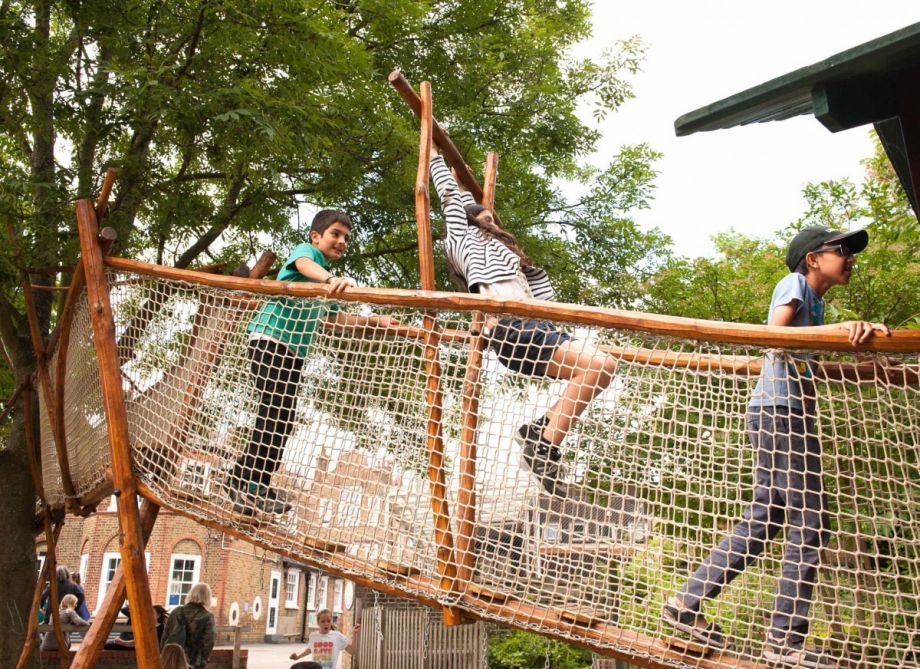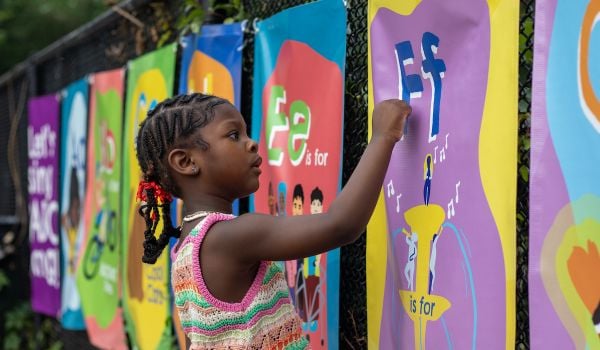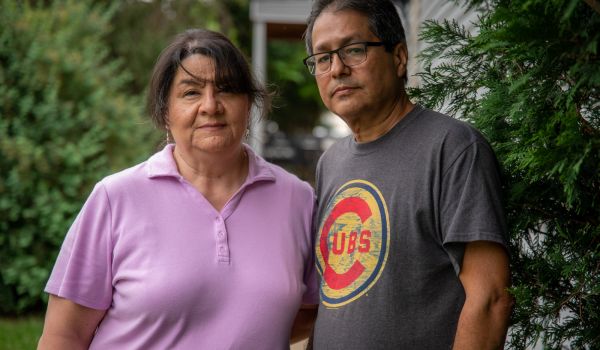If you were looking for a metaphor to explain the impact of inequality in our cities, you would find one in disparities in access to play. In London, where over a fifth of households have no garden space and the city has an average of 866 children per playground, one charity social initiative is working to put play at the forefront of the urban agenda for building up communities in London’s low-income neighborhoods.
“Play is often seen as a bolt-on,” says Paul Hocker, director of London Play, an advocacy organization which champions the rights for all children to outdoor play in the city.
“In reality, it is essential for child development,” says Hocker. “Ideally, safety and children’s freedom to play should be a key factor in city and town planning. In London, we have to fight for space for children to play. It’s just not a priority.”
The organization’s hands-on construction arm, London Play Design, was founded in 2008 to make outdoor play accessible to all by building and maintaining playgrounds in the city’s most congested and deprived parts. London Play Design has a team of carpenters, engineers and play workers who build sustainable and creative adventure playgrounds in some of the most deprived areas of London.
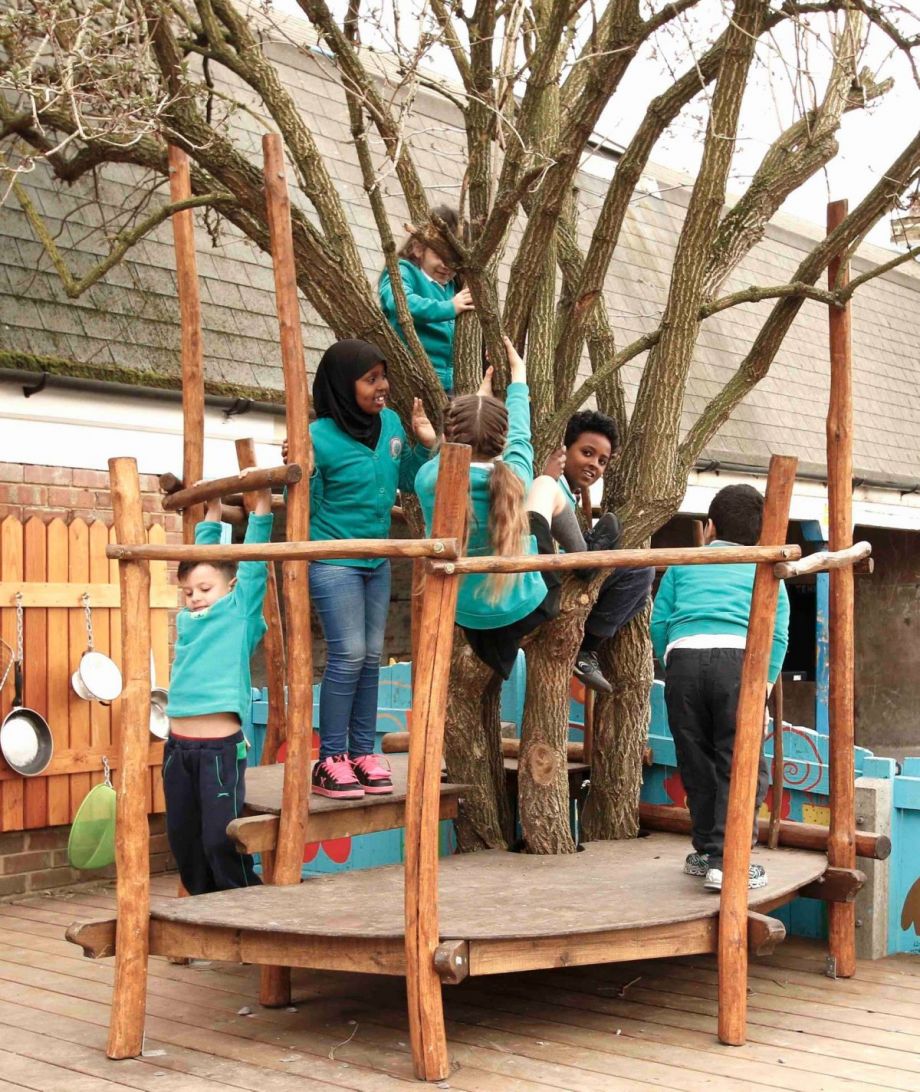
(Photo courtesy of London Play Design)
According to advocates, play facilities are often still seen as an afterthought when it comes to city development. While the right to play has been enshrined in the UN Convention on the Rights of the Child, Hocker argues that a lack of understanding, years of under-investment and a generation of parents that did not have freedom to play themselves has seen play sidelined. But to confront social deprivation and inequality, advocates say, equitable access play needs to be put at the center of the urban development agenda.
The lack of attention shows in playgrounds’ design and condition, with gaudy, plastic and metal swings and equipment in disrepair. Often, London Play’s leaders say, they attract anti-social behavior and end up being no-go areas for the children they are supposed to be made for.
“From an early age, children learn through play, so we need to think hard about what lessons we are teaching them,” says Max Mueller, Playground Builder and Managing Director of London Play Design. “If our children’s playgrounds are not a level playing field, then what hope is there for the rest of society?”
The concept of adventure playgrounds, like those London Play Design builds, was first developed in the 1940s by a group of European landscape architects. At its heart, adventure play is unstructured, outdoor play that encourages children to take controlled risks in supervised outdoor spaces that allow children to play freely. At London Play Design’s adventure playgrounds, children can use tools to build play structures, grow plants and care for animals under the watch of professional play workers.
Often, these playgrounds become community hubs which offer support to lonely parents as much as for their children. Farkhanda Khatun stands on the side of a playground, watching her 8-year-old daughter Ameena clambering up a wooden climbing frame.
“Look how high I am climbing,” the child shrieks in delight.
For Farkhanda and her family, who fled war-stricken Afghanistan and came to the U.K. as refugees, the playground is a source of comfort. “I am happy here. My daughter can be a child and forget the bombings,” she says. “People here are kind. They are patient and help me learn English. My daughter makes friends.”
For London Play’s playgrounds, the support doesn’t stop once the last nail has been hammered in. The playgrounds are supervised by play workers who run arts and crafts sessions and homework clubs. The workers offer local low-income families an alternative to traditional models of child care, which are often prohibitively expensive, and give children the opportunity to develop skills and build support networks within their communities.
Through the organization’s Play Streets project, select roads are closed off to traffic on certain days so children can play without fear of traffic. The charity also offers vulnerable children with health conditions or disabilities exclusive and supervised access to their adventure playgrounds for an hour, so they can play safely before the public sessions begin.
During these closed sessions, children like 11-year-old Louis – who has cerebral palsy and uses a wheelchair – can freely use the play equipment in a safe way.
“It’s absolutely wonderful for Louis to get the chance to play,” his 24-year-old mother, Claire, says. “If he came during normal times, other kids would get fed up as he moves slowly and I would be constantly on edge in case he gets pushed over because it gets so busy.”
Most playgrounds don’t have equipment that her son and other disabled children can safely use, so he has nowhere to play, she says. “We don’t have a garden and kids like Louis feel like they are in prison indoors.”
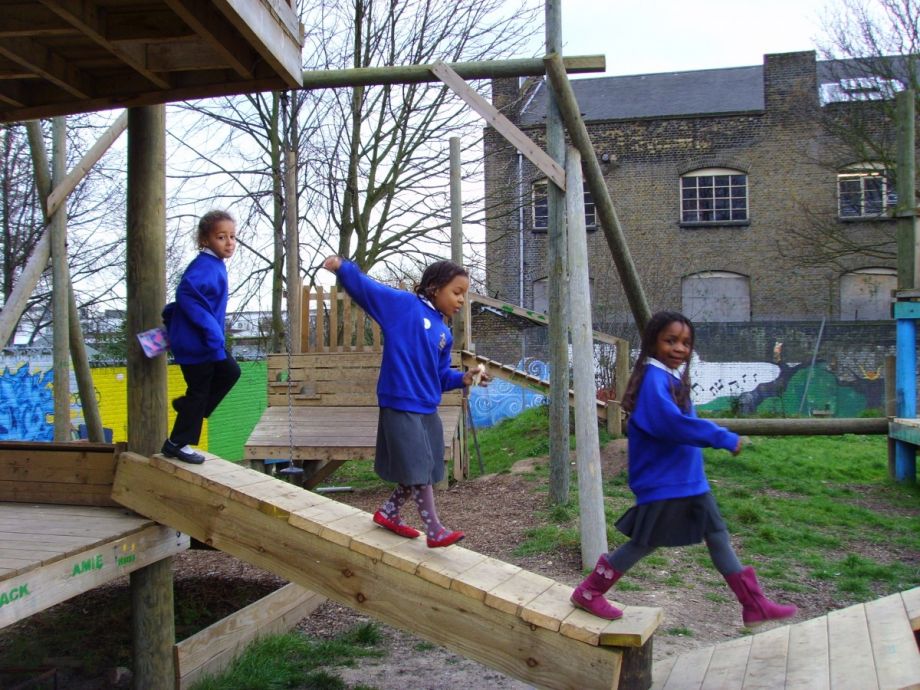
(Photo courtesy of London Play Design)
The adventure playgrounds are built using locally-sourced wood from sustainable forests. The naturally rot-resistant timber not only reduces the need for chemical preservatives, it also avoids deforestation, the use of toxic wood preservers and lacquers, and associated pollution of water.
With an army of enthusiastic volunteers and partnerships with schools, charities and community organizations, they have built, upgraded or repaired over 200 play areas throughout the city. As a nonprofit social enterprise, the projects are funded by revenue they make from commercial projects as well from grants made by organizations including the National Lottery Fund.
In many low-income neighborhoods, playgrounds have been closed down or are often in disrepair, advocates say. Play in London has suffered from chronic underfunding: Spending on youth services has fallen by 70% in the last 20 years and the city has lost about 750 youth centers. Advocates say that’s creating an underclass of children who are vulnerable to exploitation, including from the growing threat of gangs targeting disadvantaged school-aged children to use as drug mules in the region.
“By providing good playgrounds, it gives young children somewhere to go where they feel safe and can be children and escape the difficulties in their lives, which is the Achilles heel gangs look for when targeting children,” Mueller says.
The issue of inequalities of play in cities was brought into the spotlight in the U.K. following outcry over segregated playgrounds three years ago.
London is home to some of the most expensive real estate in the world. With land at a premium, every scrap of land is a target for developers. To get permission to build in London, developers must allocate a certain percentage of housing projects to social housing. However, a 2019 investigation by The Guardian found that some developers were restricting access to playgrounds for low-income children living in social housing on the same housing development. In the wake of the report, authorities banned segregated play spaces in future housing developments.
“From a playground builder’s point of view, I can’t see where the ‘unique selling point’ is for a developer to offer segregated play,” Mueller says.
“Our communities are already divided by fear of crime, rising xenophobia and an ever-widening gap between rich and poor. What better place to build bridges than a children’s playground where kids from all backgrounds can mix and build relationships?”
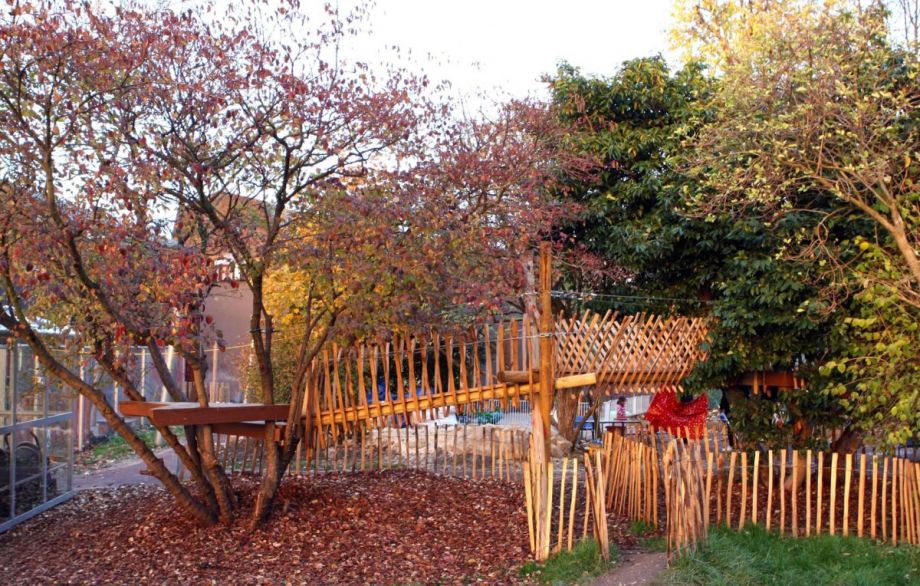
(Photo courtesy of London Play Design)
Inequality of access to outdoor play goes beyond just having somewhere to sit on the swings. It has ramifications on health, education and social outcomes for children from deprived backgrounds. In the long term, it also affects mortality rates.
According to a study published in the journal Environmental International earlier this year, children living in urban areas with increased air pollution and lack of access to green spaces have a 62% higher risk of developing ADHD.
In 2019, researchers at Penn State University found a “significant association” between increased government funding for parks and recreation services and decreased mortality rates over the past three decades. “In a time where people are searching for solutions to public health challenges, funding local parks and recreation services appears a valid approach,” the study’s authors concluded.
During pandemic-era lockdowns, social distancing requirements and the closure of schools and other facilities for children brought home the importance of playgrounds for children and the health effects of lack of play and social contact.
“As a society we need to prepare the next inheritors of our city so that they become happy, healthy and creative adults,” Hocker says. “Play will absolutely do that but it needs to be supported by us, the grown ups, and those with power.”
Alia Waheed is an independent journalist in the U.K.

